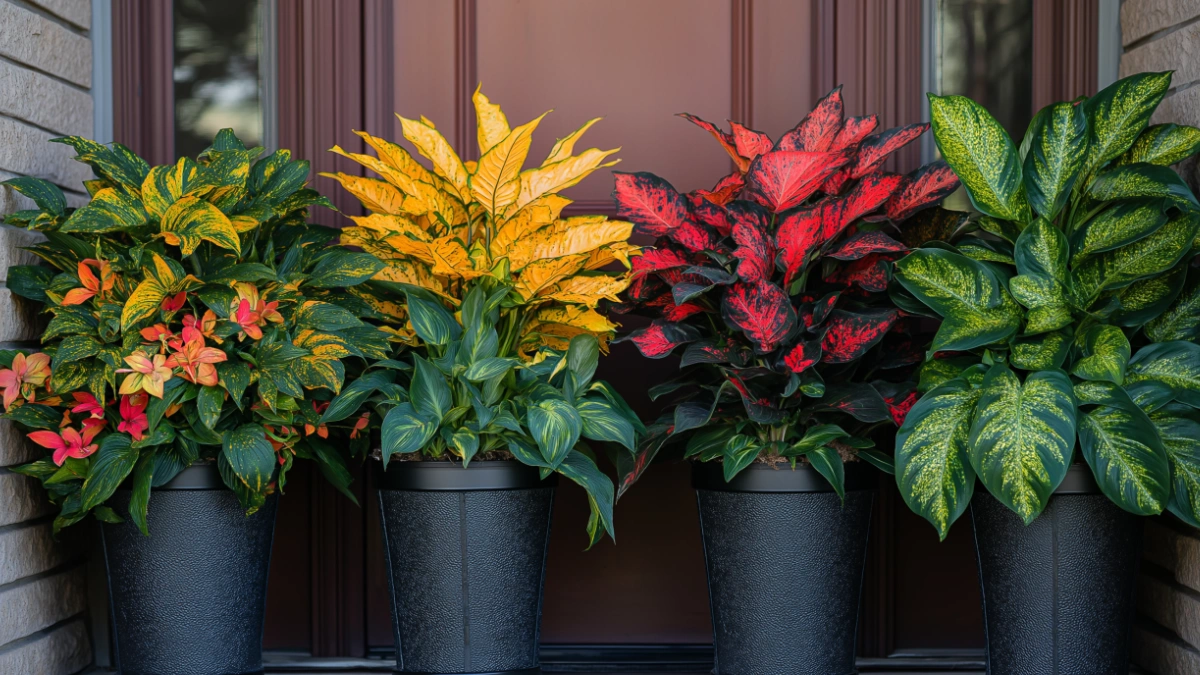Layered Front Porch Planters That Make a Statement: Seasonal Styling Tips for Curb Appeal
Table of Contents
First impressions matter—and your front porch is the perfect place to show off your home’s personality and seasonal charm. One of the most effective and beautiful ways to elevate this space is through layered front porch planters. These aren’t your average flower pots. When thoughtfully arranged, layered planters bring height, dimension, color, and texture that transforms your entry into a welcoming focal point.
More than just decorative, these multi-level arrangements can express the changing seasons, complement your home’s exterior, and highlight your personal style. Whether you’re working with a narrow stoop, wide veranda, or steps leading to a craftsman-style door, there’s a layered planter idea that fits your space.
This blog post explores practical design tips and creative inspiration to help you master the art of layering front porch planters. You’ll learn how to choose the right containers, select seasonally appropriate plants, use height and color contrast effectively, and maintain visual interest all year long. Plus, we’ll walk through expanded sections with deep dives on seasonal layering strategies and container combinations that stand out.
Choosing the Right Planters for Layering Success
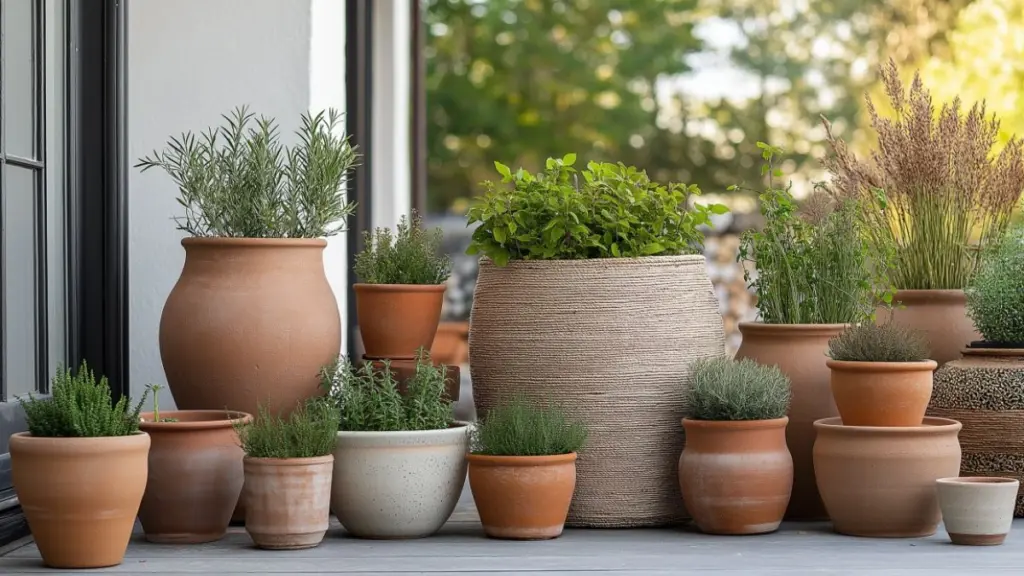
Before diving into plants and arrangements, it’s crucial to choose the right containers to create a foundation for layered design. Varying planter sizes, shapes, and materials offer visual rhythm and structure while giving each plant the space it needs to thrive.
Start with a tall statement planter as your anchor. This should sit closest to the door or at the back of your arrangement. Then, build downward and outward with mid-height pots and low-profile containers or trays. Consider using urns, pedestal bowls, or rectangular troughs to add variety. Matching the material—terracotta, ceramic, metal, or woven baskets—to your home’s exterior helps create a cohesive look.
Remember, layering isn’t just about height—it’s about proportion and balance. Odd-number groupings (like three or five) tend to feel more natural and aesthetically pleasing.
Table: Recommended Planter Types by Height
| Planter Type | Position in Arrangement | Best For |
|---|---|---|
| Tall Urns | Back or near entry | Statement pieces, height layering |
| Mid-Size Pots | Center or flanking edges | Supporting structure, filler plants |
| Low Bowls/Boxes | Front or base | Trailing plants, seasonal décor inserts |
| Hanging Baskets | Vertical layering | Overhead greenery or blooms |
| Tiered Stands | Multi-use centerpieces | Small plants and herbs |
Creating Visual Impact with Height, Texture, and Contrast
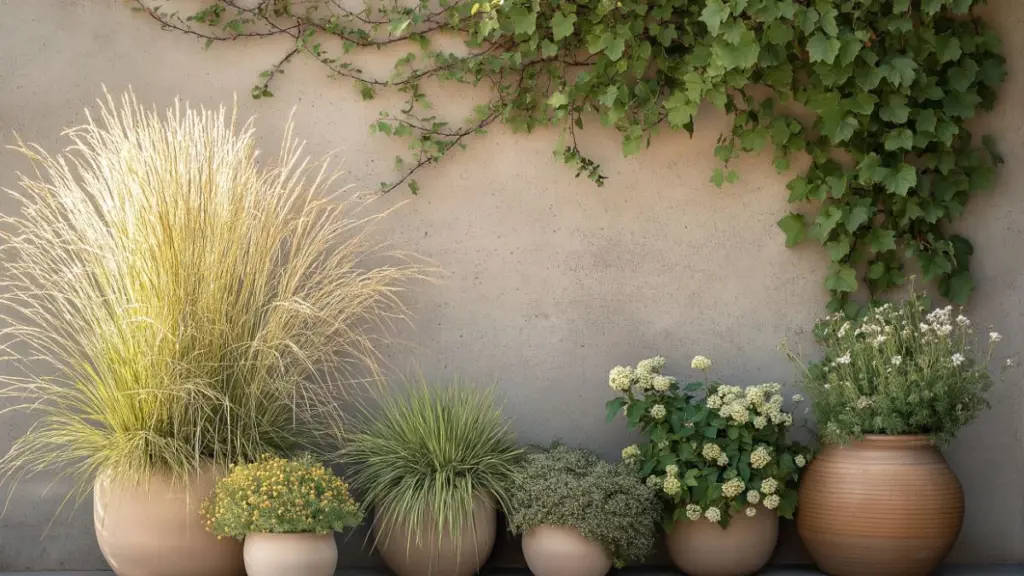
A great layered planter arrangement combines vertical variety with textural interest. Think of it as designing a landscape in miniature. The secret is to include plants that serve three distinct roles: thrillers, fillers, and spillers.
“Thrillers” are your statement plants—tall grasses, ferns, or flowering stalks that draw the eye. “Fillers” are bushier plants like coleus or petunias that give body to the arrangement. “Spillers” include ivy or sweet potato vine that cascade over the edges of the pots, softening hard lines and adding movement.
Mix textures—pairing glossy leaves with feathery fronds or matte succulents with velvety blooms—to keep the design interesting. Likewise, contrast colors and shapes. Bold purple foliage beside creamy white blossoms, or upright grasses next to low-set herbs, provides natural drama.
Checklist: Elements of a Well-Layered Planter
| Role | Plant Traits |
|---|---|
| Thriller | Tall, vertical, architectural |
| Filler | Mounding, colorful, adds fullness |
| Spiller | Trailing, softens edges, adds motion |
| Texture | Mix leaf shapes—spiky, round, trailing |
| Contrast | Use complementary or bold color pairings |
Seasonal Layering Strategies for Year-Round Interest
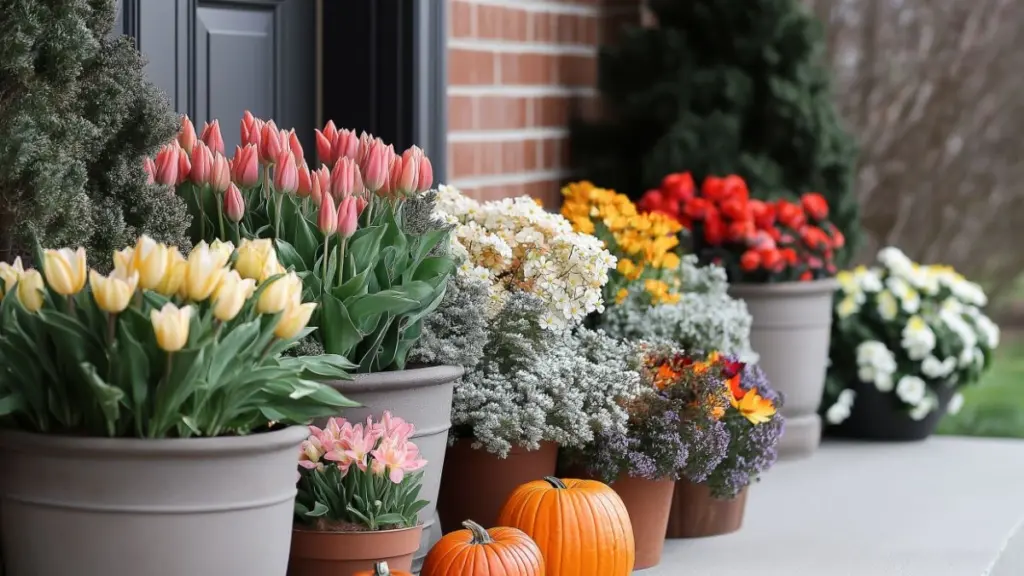
To keep your layered front porch planters looking fresh and inviting throughout the year, adopt a seasonal approach. Rotate plants and accents based on temperature, bloom cycles, and festive elements. By planning a calendar of plant swaps and design refreshes, your porch stays stylish no matter the season.
In spring, think fresh greens and florals—like tulips, pansies, and trailing vinca. Summer brings bold colors and heat-tolerant picks like geraniums, petunias, and ornamental grasses. Autumn calls for richer tones: mums, ornamental kale, and pumpkins layered into the planters. Winter doesn’t mean you have to remove everything—use evergreen boughs, pinecones, and weatherproof décor for texture and seasonal flair.
To simplify swaps, use interior pots inside larger planters. When the season changes, you can lift out one pot and replace it with another without disturbing the overall arrangement.
Table: Seasonal Planting & Styling Inspiration
| Season | Plants & Accents | Color Scheme |
|---|---|---|
| Spring | Daffodils, pansies, vinca, hyacinths | Pastel tones, fresh greens |
| Summer | Geraniums, begonias, coleus, lavender | Bold brights, cool blues |
| Autumn | Chrysanthemums, ornamental peppers, pumpkins | Deep reds, golds, rust |
| Winter | Pine boughs, holly, birch branches, faux berries | Evergreen, white, silver |
Selecting Color Palettes That Complement Your Home Exterior
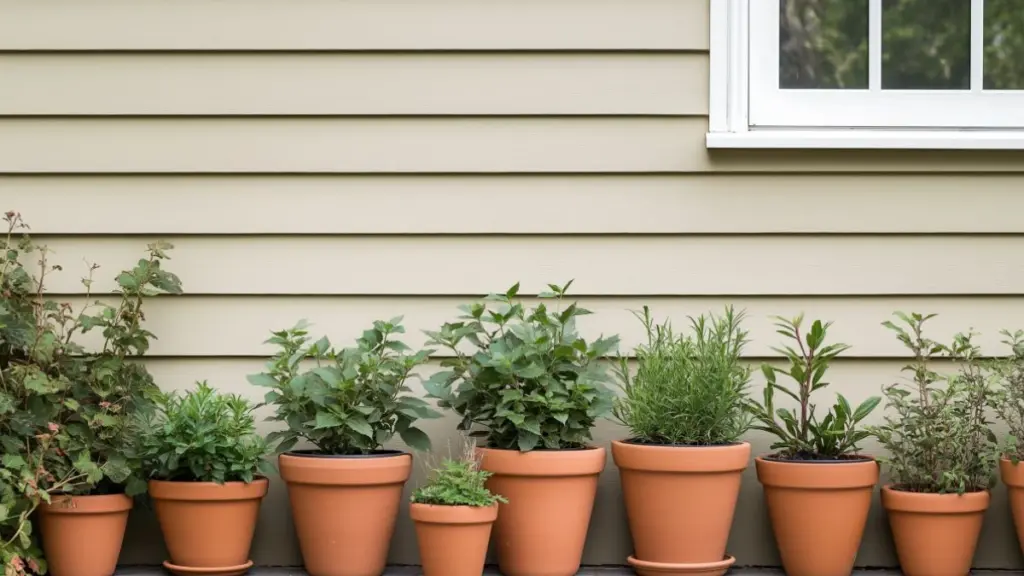
Layered porch planters don’t exist in a vacuum—they’re part of your home’s curb appeal. Choosing colors that complement your exterior helps tie everything together visually. Look to your home’s siding, shutters, door color, and trim for cues.
For neutral-toned homes (gray, beige, white), nearly any plant palette works—but cool tones like lavender and white can feel especially elegant. Homes with red brick pair well with deep greens, yellows, and purples. If your front door is painted a bold color, echo that tone subtly in your planter accents for a designer finish.
Keep in mind that foliage colors matter just as much as blooms. Silver, burgundy, chartreuse, and dark green leaves can all add richness and variation without relying on flowers.
Table: Matching Planter Colors to House Exteriors
| Home Exterior Color | Ideal Plant Palette |
|---|---|
| White/Neutral | Soft pastels, bright greens, lavender |
| Red Brick | Purples, deep green, gold, white |
| Navy/Blue Gray | White blooms, silver foliage, pops of pink |
| Beige/Warm Tones | Burgundy, orange, dark green, cream |
| Black/Dark Exterior | Jewel tones, bold brights, variegated greens |
Incorporating Planter Stands and Steps for Height Play
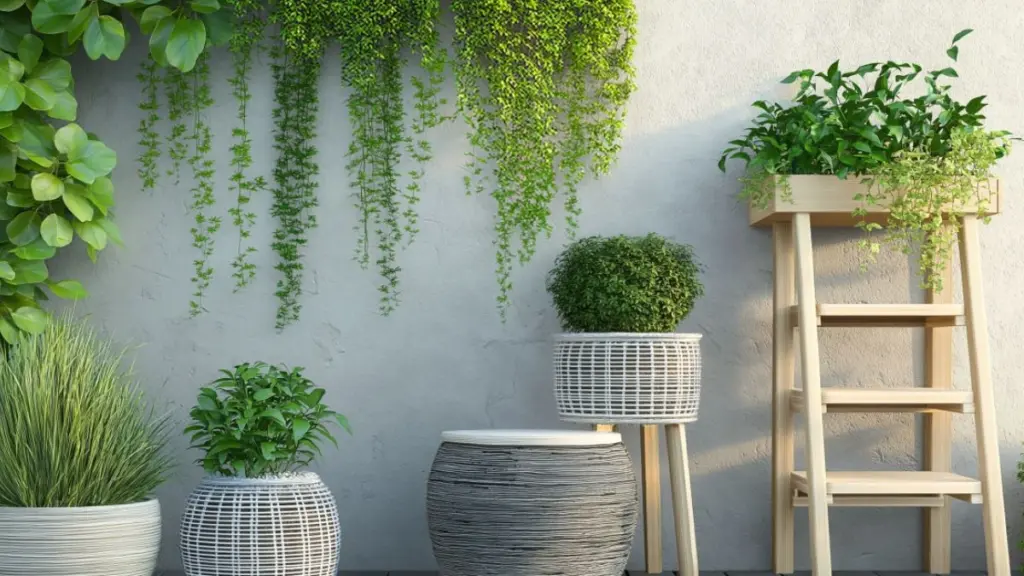
If your porch includes stairs or has limited square footage, use verticality to your advantage. Elevating your planters on stands, risers, or steps not only maximizes space but adds drama and dimension to your porch vignette.
Groupings work well on ascending porch steps—start with the tallest planter closest to the house and step downward with medium and small containers. Use stands to create staggered height where steps aren’t available.
Don’t be afraid to mix materials—metal stands with clay pots or wood crates with ceramic bowls. The key is consistency in color palette or styling to prevent visual chaos.
Step-by-Step: Layering Planters Using Height
| Height Technique | Use Case |
|---|---|
| Steps | Layer planters upward toward the door |
| Plant Stands | Create staggered heights on flat surfaces |
| Wall Shelves | For smaller pots or herbs on narrow porches |
| Stackable Crates | Adds rustic flair and adjustable elevation |
| Hanging Planters | Adds greenery at eye level and above |
Combining Live Plants with Seasonal Decor Accents
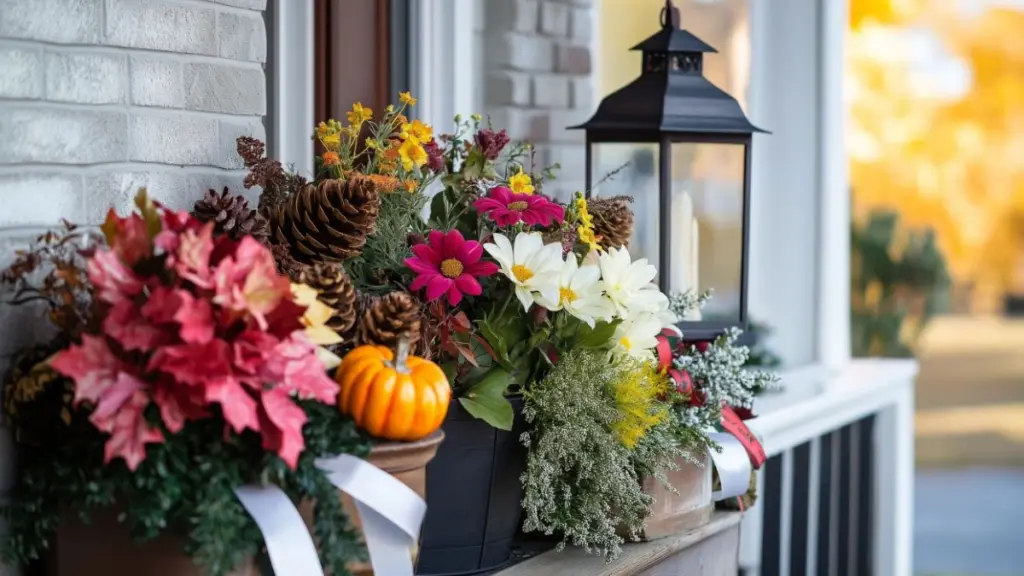
Layered planters aren’t limited to flowers and foliage—seasonal accents can bring depth and fun to your porch all year long. Think pumpkins and gourds in fall, lanterns and ornaments in winter, or beachy shells and twinkle lights in summer.
These elements should enhance—not overpower—your plants. Choose weather-resistant materials and coordinate them with your container tones and home style. A galvanized bucket filled with pine sprigs and fairy lights, or a ceramic bowl with trailing petunias and small decorative flags, can take your porch from nice to magazine-worthy.
By mixing botanical elements with curated objects, you reflect seasonal spirit while maintaining a timeless porch aesthetic.
Table: Decor Items to Pair with Layered Planters by Season
| Season | Decorative Accents |
|---|---|
| Spring | Painted eggs, birdhouses, garden tools |
| Summer | Lanterns, seashells, string lights |
| Autumn | Gourds, hay bales, metal pumpkins, signs |
| Winter | Ornaments, pinecones, faux snow, oversized bows |
Conclusion
Layered front porch planters are more than décor—they’re a dynamic, expressive way to welcome guests and celebrate the rhythm of the seasons. By choosing the right containers, playing with height and contrast, and incorporating both plants and accessories, you can design a porch that evolves beautifully all year long. Whether you’re working with a few steps or a grand veranda, there’s always room for creativity, color, and a personal touch.

